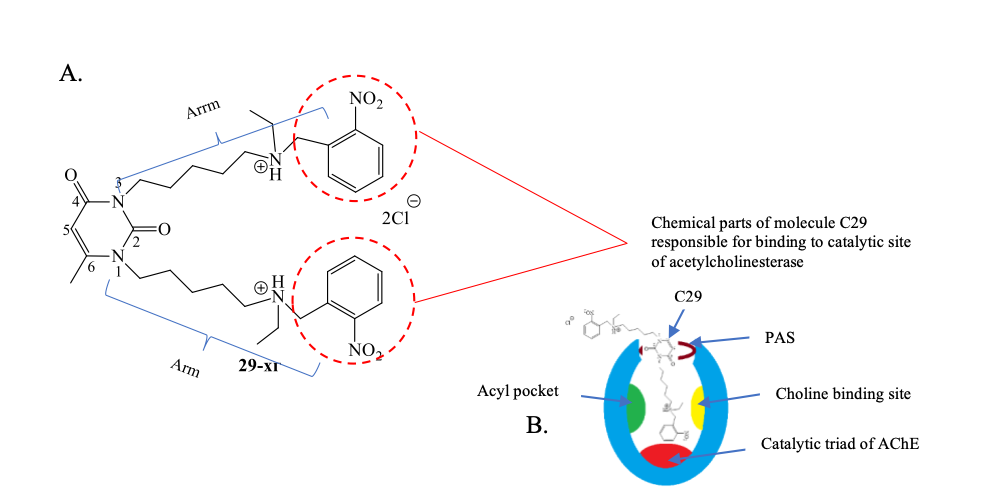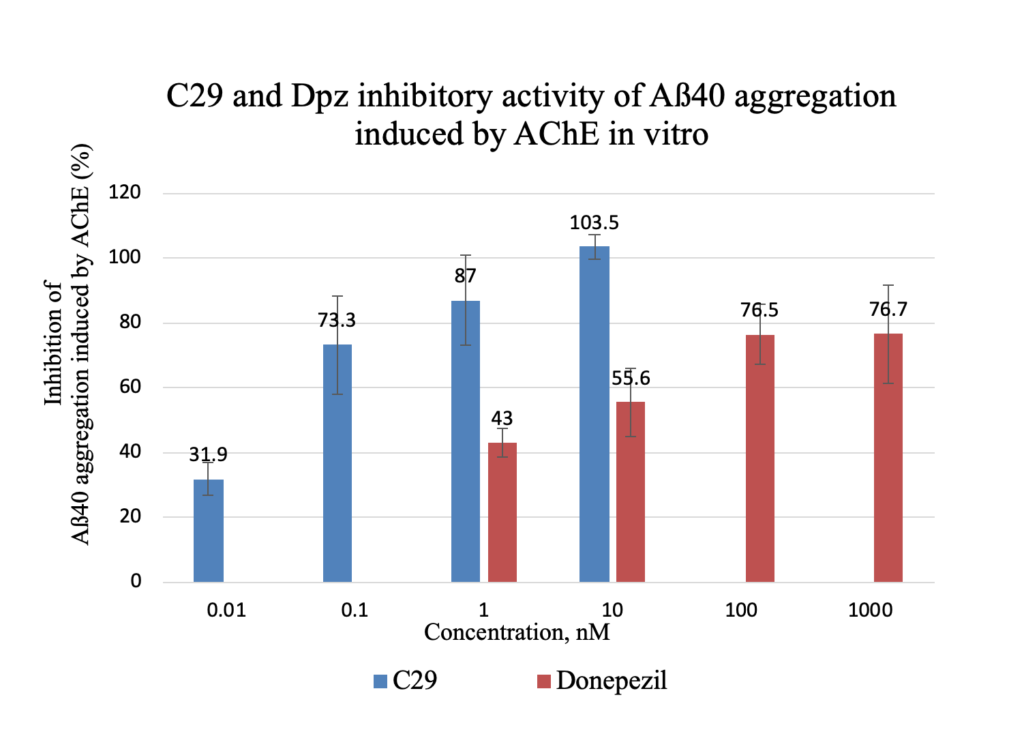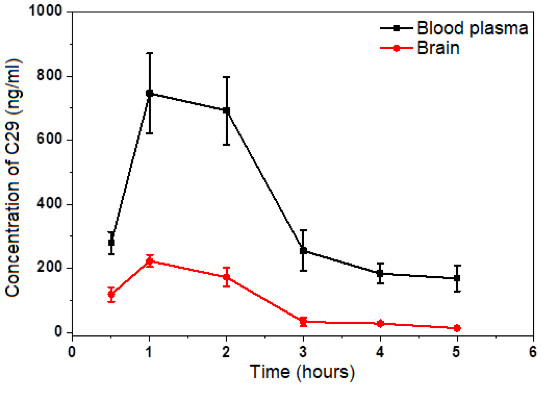Novel Dual binding Acetylcholinesterase inhibitor for the treatment of Alzheimer’s disease
Alzheimer's disease (AD) is a neurocognitive disorder and the most common cause of dementia.
The two pathologic hallmarks of Alzheimer disease are
- Extracellular beta-amyloid deposits
- Intracellular neurofibrillary tangles
The beta-amyloid deposition and neurofibrillary tangles lead to loss of synapses and neurons, which result in gross atrophy of the affected areas of the brain, typically starting at the mesial temporal lobe.
Currently approved or in development therapeutic drugs for AD inhibit acetylcholinesterase activity, or inhibit Aβ production / accumulation or aggregation in the brain.
AVVA’s novel small molecule (C29) dual action acts as AChE inhibitor and prevention of Aβ aggregation.

C29 chemical structure and target sites
А. Chemical structure of molecule with highlighted active parts of molecule responsible for binding with acetylcholinesterase.
- Scheme of C29 interaction with acetylcholinesterase active site.
RESULTS OF DISCOVERY STUDIES WITH C29


Inventors

Konstantin A. Petrov, PhD
Head of International Research and Innovation Center for Neurochemistry and Pharmacology at Arbuzov Institute of Organic and Physical Chemistry of FRC Kazan Scientific Center of RAS

Vyacheslav E. Semenov
PhD, D.Sc.(chemistry), assistant professor
Head of Laboratory of Chemistry of Nucleotide Bases at Arbuzov Institute of Organic and Physical Chemistry of FRC Kazan Scientific Center of RAS

